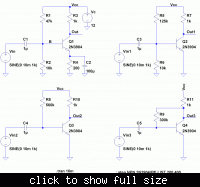jeffrey samuel
Advanced Member level 4

- Joined
- Jul 23, 2012
- Messages
- 1,092
- Helped
- 107
- Reputation
- 214
- Reaction score
- 107
- Trophy points
- 1,363
- Location
- chennai,india
- Activity points
- 6,373
why is their great variations in the β value and the collector current when bjt is used for a prolonged period of time





